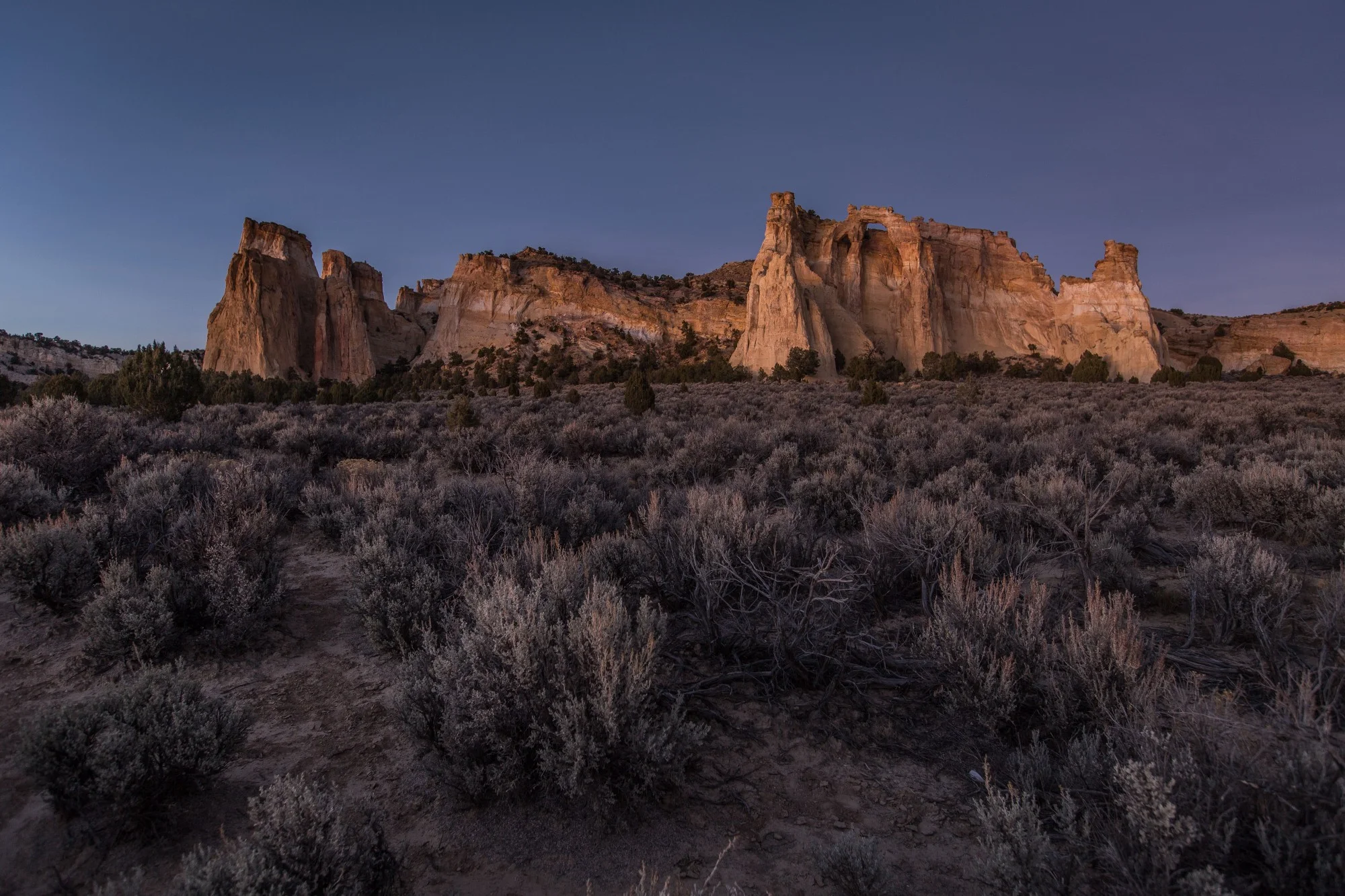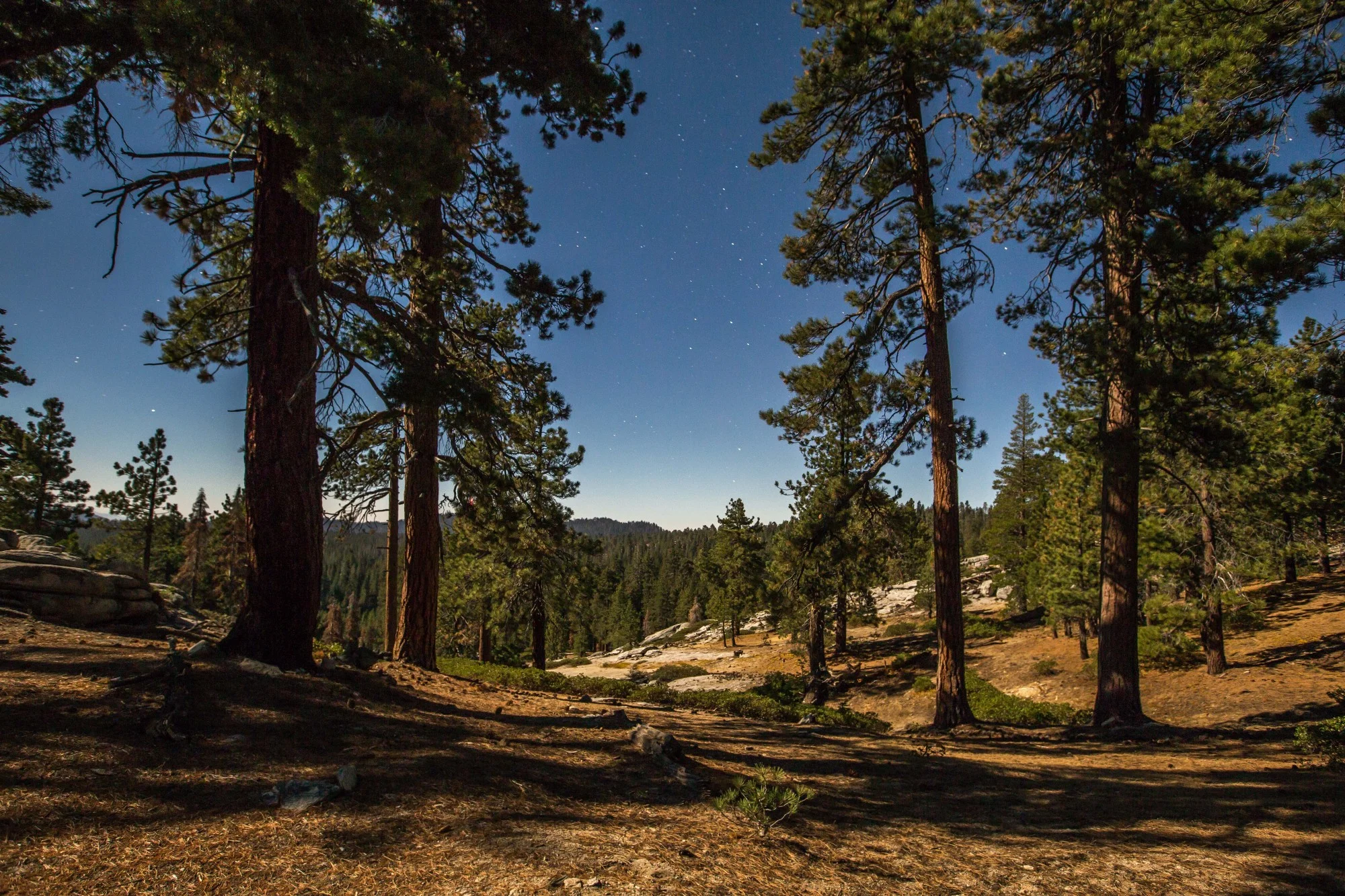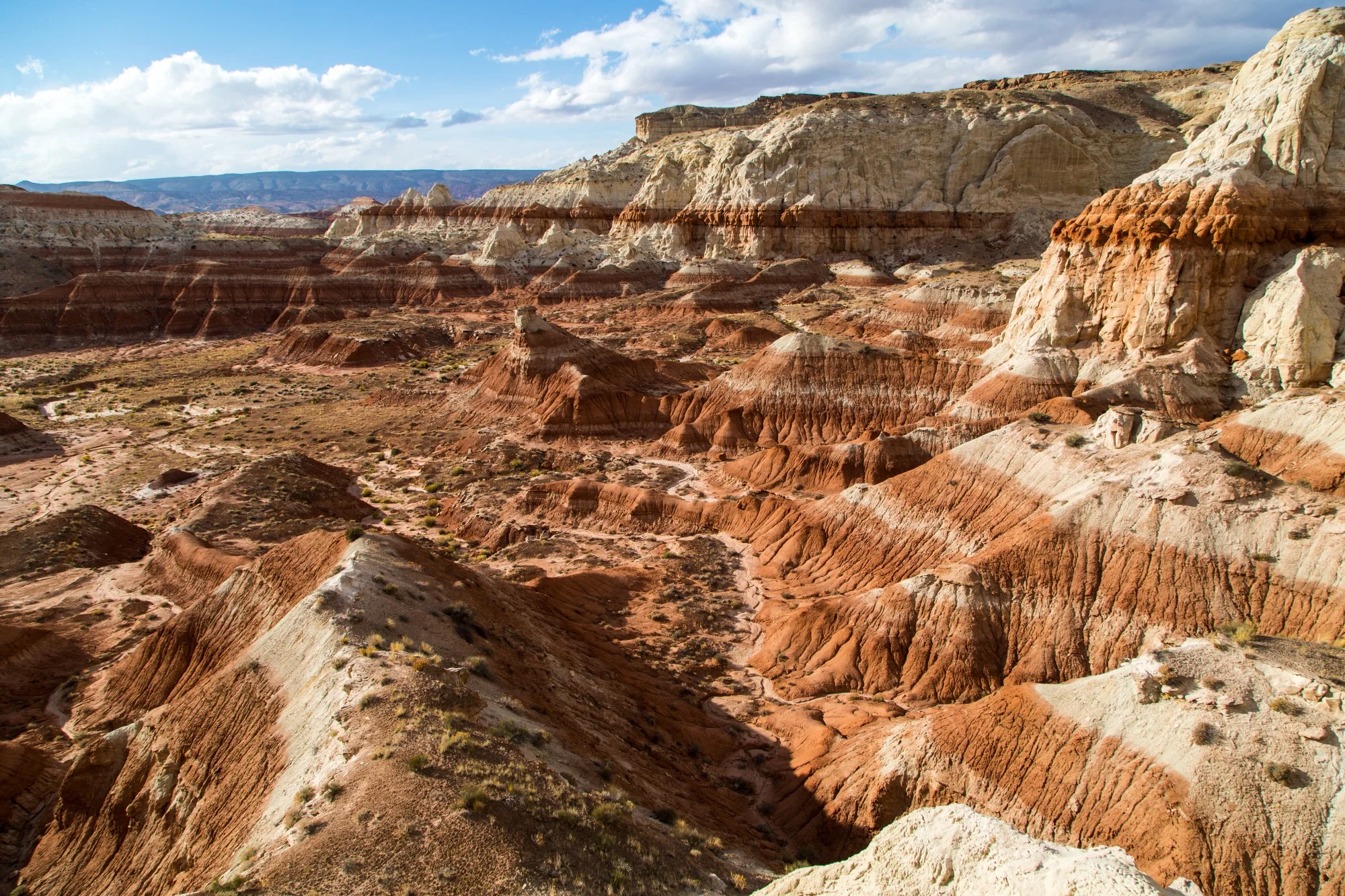UPPER MISSOURI RIVER BREAKS: Paddlers in a Historic Landscape
Text: Andreea Lotak; Photos: Justin & Andreea Lotak; · 7 min read
Our canoe parked next to the first campsite in the national monument
We met Martha Vogt and Jim Greene at the Coal Banks Landing visitor center within the national monument. Both had an air of calm happiness, of two people who know they’re in the right place. They welcomed us from the building’s porch alongside their dog. Martha is currently a member of the Board of Directors for the Friends of the Missouri Breaks Monument, and Jim is a former member. During the visitation season they work as volunteers for the BLM, living at Coal Banks Landing and helping people who come through to get the best experience possible. Their authentic love for the river and the monument was what motivated their decision to come spend yet another season in this beautiful land.
We paddled down the Missouri in late August, when there was no clear news regarding the fate of national monuments after Secretary Zinke’s review. The Upper Missouri River Breaks National Monument was one of the few considered safe, but rumors about management plan changes and reopening the land for mining or oil drilling were keeping supporters on the edge. “We’ve been working on this monument for 13 years and it’s just become part of our lives. You can understand, it just becomes… we call it spiritual. We take the canoes to be by ourselves and it’s a spiritual experience…”, began Jim in a soft voice. Before the interview started he was worried that he would get too emotional about the whole review. After this short introduction he remarked laughing that this beginning wasn’t too bad after all. Throughout the review period he wrote numerous letters to raise awareness of the reasons why the monument should remain ‘as is’. So far, it looks like no changes were recommended by Secretary Zinke for Upper Missouri River Breaks.
For people like Martha and Jim, the river means life. Soon we would feel the same. “First time we canoed the river was in 1995, and we’ve canoed parts of it 27 times. The visitation is up from 1995 but it hasn’t increased dramatically from one year to the other. So it is still quite pristine, except for the cows”, added Martha. When we asked whether the river has changed in this time, Jim responded that “it has changed only in the fact that it means even more to us now than it meant earlier, because we know more of the history, we know more of the geology and it becomes more powerful to us with recent trips.” The Missouri is America’s longest river, at 2,341 miles. When the Europeans started making their way upstream and downstream, its rapids were capable of sinking ships. Now the numerous dams along it have tamed its strength, but its beautiful wildness is here still along the 149 miles of Wild & Scenic River in Montana. It was one of the first river segments to be protected under this designation in the early 70s, the last free-flowing part of the Missouri left in the US. Then, in 2001 under president Clinton, the protected area was expanded to reach 377,000 acres under the national monument status.
At one of the campsites along the Missouri. The hikes and campsites deep inside the monument are reached only from the river. The cottonwood trees are a beautiful sight, but they are at risk of disappearing. Very few new cottonwoods grow annually because flooding events on the river are controlled by dams, which prevent the seeds from being carried downstream. Friends of the Missouri Breaks Monument have been working to plant over 300 new trees on the river banks.
There are over 60 miles of wild river without developments along its banks. It’s one of the most scenic sections of the national monument. Grazing rights continue even in this most pristine part of the river and, as Martha observed, dozens of cows can be seen along the banks. When the monument was designated it caused an uproar in certain ranching communities, as people were afraid of losing their grazing rights and had a natural distrust in the federal government. Some of them still hold a grudge until today, and the review brought back to life some of these dormant conflicts. “There was a lot of work that went into the monument and there was a lot of public input, even though some locals say they didn’t get to say their piece. There were a lot of public meetings. Whether or not they went to them we don’t know, but there were a lot of them that contributed to the decision”, Martha observed. “It’s a mixed bag. Winifred is very anti-government, even though most of them lease land from the BLM very cheaply and most have farming subsidies. Then Fort Benton is totally dependent on the tourism industry during the summer. I would say that the majority of business owners in Fort Benton like the monument.”
One of the serene landscapes along the White Cliffs section of the monument.
“WE’VE BEEN WORKING ON THIS MONUMENT FOR 13 YEARS AND IT’S JUST BECOME PART OF OUR LIVES. YOU CAN UNDERSTAND, IT JUST BECOMES — WE CALL IT ‘SPIRITUAL’. WE TAKE THE CANOES TO BE BY OURSELVES AND IT’S A SPIRITUAL EXPERIENCE…”
The canoe we rented was from a local business in Fort Benton, Adventure Bound Canoe. and Shuttle Co. The owner, Nicolle Fugere, worked on the river for a decade as a guide before taking ownership of the company. When we asked her about what it would mean to lose the national monument designation for this area, she said: “I think that would be detrimental. Not only for the economic aspect for business owners like me, but for future generations. It would open the river up for different options. That’s why it was set aside as a monument, so those options would not be explored. And it would have a huge economic effect for people like me and for this town.” For Nicolle the importance of keeping this place wild goes beyond the economics of her business because she spent so many seasons out there, sharing the experience with visitors. “Wildlife has increased quite a bit over the years. We’ve actually had grizzly bears and wolves making their way down here. Unfortunately they don’t last long due to mixing with cattle and… they just don’t blend in very well. However, the bighorn sheep on the lower river… I’ve had people tell me about seeing herds of 40 individuals this year. Yeah! There’s times when you go around a bend and you see five full-grown rams. The bighorn sheep are doing amazing and that’s cool to notice. I don’t see very many elk along the river, but I know from hunters that it’s an amazing place for hunting. The elk are here and there’s quite a bit of them.” Then she tells us stories about the impossible mud on the shores during springtime, the birds, the storms of summer, and leaves changing in the fall. “It’s hard, because this monument has a huge part of my heart. It’s just bigger than life when you’re out there. Even having storms come through, with these huge lighting bolts and thunders, you’re just one with nature and there’s nothing in-between. No technology, no motors. You’re going back to your element. You’re paddling yourself down. You’re just in it. And there is no turning back and paddling up river. You just have to keep going.”
Back in Coal Banks Landing, Martha and Jim share their own experiences on the river with the same passion and attachment. They both finish each other’s stories:
J: “When we camped last time we heard over 12 coyote choruses in the evening, throughout the night and until the morning, calling and barking.”
M: “And great horned owls hooting, and screech owls.”
J: “At the same time.”
M: “It was a noisy night (laughs). And other nights it’s absolutely silent. You can’t hear a sound. It almost hurts because it’s so quiet, your ears are straining.”
J: “It seems surreal.”
M: “Yeah.. and the stars are incredible. Lots of falling stars…”
Beyond the banks the landscape is a wild one, with beautiful grasslands that are home to hundreds of prairie dogs.
When we said goodbye and they took a picture of us in the canoe, Martha and Jim seemed more excited about our trip then we were. They were anticipating the awe that we were going to experience. They were right. For the following three days we felt that we had entered a magic land through a time portal. We did see the tens of cows on the banks, the old cottonwoods that the river can’t regenerate naturally anymore because of the dams that prevent flooding events, and the many bald eagles on the impressive cliff formations. Jim and Martha had talked about all this. They told us that once a group of teens came to visit and one of them said that he was there to have “the experience of a lifetime”. They told us that everyone who comes here should seek this enthusiasm, seek to fully live those days on the river. As we floated down we embraced the silence, the cool water rushing by, the towering cliffs and the wildlife. When we found ourselves in the middle of this beautiful river we felt connected to the landscape more than in any other place. We were fully in it, like Martha, Nicolle and Jim said it would be.














To date, President Joe Biden has designated five national monuments since coming to office in 2021. Here we take a look at four of those five national monuments that had a land conservation element, and what might be on the slate before the end of his first term.